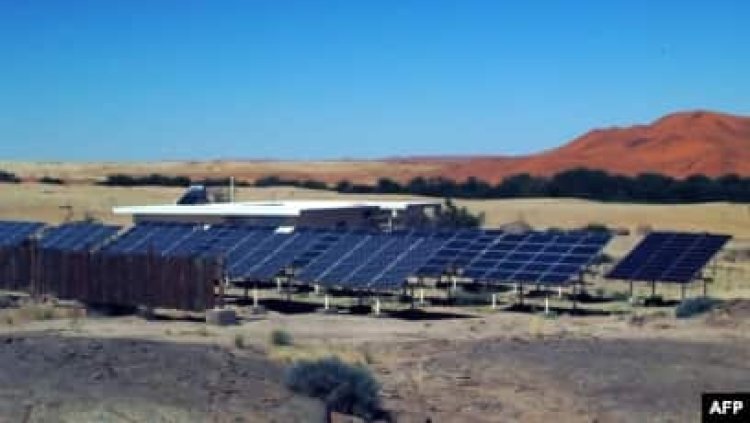Environmentalists in Namibia Oppose Green Hydrogen Production in National Park

WINDHOEK—An umbrella body representing 77 environmental protection groups in Namibia is voicing opposition to proposed green hydrogen production in the Tsau Khaeb National Park by a German company because of the harm they say it poses to animals and plant life in that area.
The Tsau Khaeb National Park in southern Namibia is one of 36 recognized globally recognized hotspots for biodiversity. It is renowned for succulent plants as well as wildlife that includes antelopes, leopards and brown hyenas.
However, this biodiversity will be harmed if green hydrogen is to be produced in that pristine wilderness, said Chris Brown, the head of the environmental coalition known as Namibia’s Chamber of Environment.
“When Germany and to a certain extent other countries in the European Union are offsetting the costs of green hydrogen, offshoring it, and we are carrying the burden of those costs and we are carrying the long-term, permanently long-term cost of losing a national park with all its future developments, to provide relatively short-term cover for Germany’s energy, that is a major problem," Brown told VOA at his offices in Windhoek. "It’s a moral problem as well as a long-term economic problem and a welfare problem for Namibia.”
Green hydrogen is produced using wind, water and solar power to produce ammonia, which is then converted to hydrogen, which can be used for steel production and as a fuel for ships and vehicles.
In a rush to decarbonize, European member states like Germany, Belgium and the Netherlands have allocated millions of euros to pilot projects along Namibia’s sunny and windy coastline for green hydrogen production.
Ambassador Ana Beatriz Martins heads the EU delegation to Namibia. She held a public lecture on green hydrogen at Namibia’s University of Science and technology on Wednesday.
“Private European companies are already invested in some of the nine projects of green hydrogen, with the pipeline of investments of 401 billion Namibian dollars on our side," Martins said. "We have grants and loans - you can see here, I don’t need to mention that. We also have public money.”
However, environmental law expert Hans-Christian Mahnke questions the legality of allowing green hydrogen production to take place in the 2 million-hectare Tsau Khaeb National Park.
“That’s another legal aspect," he said. "There is the Park Management Plan, which is a contract between the government and the people. Now, certain NGOs and communities ... have concessions in the park. The park plan is a contract - it’s not a policy or whatever. They agreed [to] something [in] which [the] government said that this is how it’s gonna go. But the moment green hydrogen comes in, then they have to throw that Park Management Plan out of the window, which they haven’t done yet.”
In its quest to become carbon neutral, Europe wants to cut carbon emissions by 57 percent by 2030, and this means producing 10 million tons of green hydrogen in Europe and importing the same amount from countries like Namibia.
The Chamber of Environment coalition says that it does not oppose green hydrogen production itself, but that it should not be done at the expense of Namibia’s environment.
Story Courtesy; VOA NEWS (voaafrica.com)

































